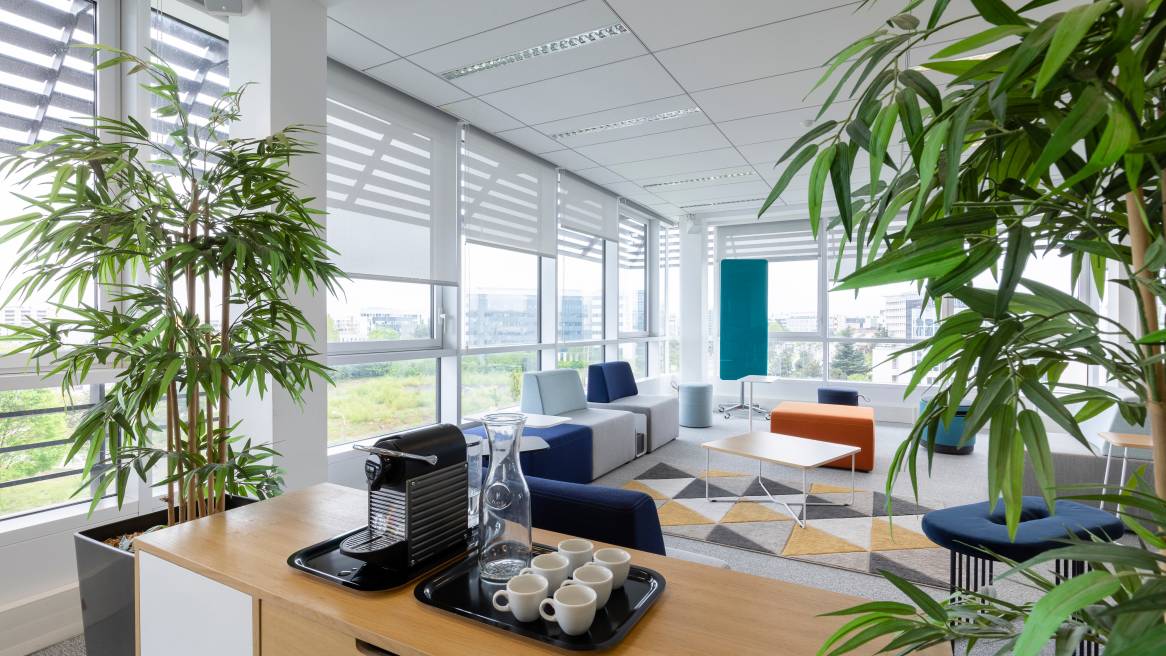Designing Flexible Spaces for a More Flexible Way of Working
Siemens Smart Infrastructure France creates spaces that attract hybrid employees to the office
© Alexis Paoli
“We want to attract employees to come back to the office, and we give them the environment to support them.”
SÉBASTIEN BUTAT Director Smart Office France
When Siemens Smart Infrastructure France moved its headquarters and local branch to a renovated building in Paris Vélizy in 2018, they focused on a modern look and feel with generous lighting and a relatively neutral space to appeal to more than 450 employees in a variety of disciplines. But shortly after moving in, the management team realized the space needed to do more than look great. It also had to support important issues like employee wellbeing, flexibility and high-performance. At the time, they did not know the space they were creating would help them handle the disruption caused by the global pandemic and the ensuing need to work in more hybrid ways.
A Workplace with a Vision
The French management team wanted their workplace to be a place where customers and employees could experience exceptional spaces, products and solutions. Siemens Group develops smart applications and digital tools for space management such as systems to manage employee presence, room reservations, climate control and security. At the same time, they were introducing the “FlexOffice” concept which allowed their employees to work from home two-to-three days per week. They wanted people to feel comfortable in their workplace and to be able to have informal connections. And, of course, they wanted to achieve their goals while optimizing their budget.
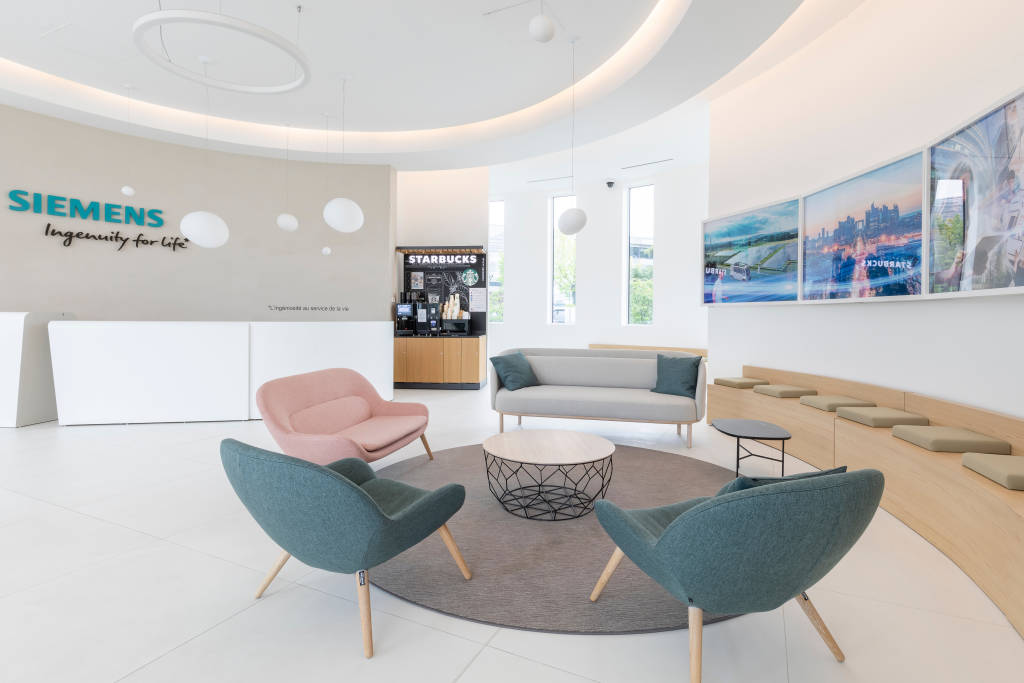
© Alexis Paoli
Reception to Reconnection
The team realized the reception area was an opportunity to not only welcome guests, but also to energize employees and provide them with a place to come together. Initially, the space lacked visual appeal and added value for employees. By combining the reception and break area with a coffee bar and colorful furniture and plants, the space is now used more often for external and internal people to meet and spontaneously connect which brings life to the reception area.
Flexible Spaces for Flexible Work
The coworking area was a large space divided into different sizes for teams or individuals. With a more flexible work policy, people often wanted to use the office to collaborate. Now, the space has been completely restructured with mobile partitions to be used for various events.
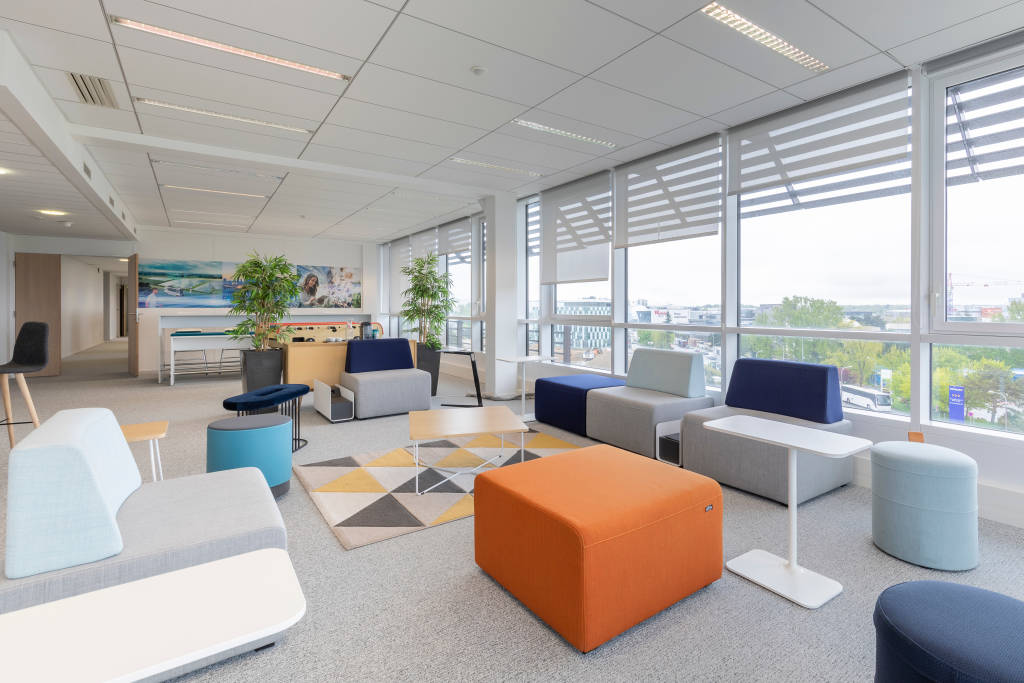
© Alexis Paoli
During the lockdown, this coworking space was flexible enough that it was able to be transformed into a broadcast studio for large internal meetings, client meetings or webinars.
Planning Ahead
The changes have been so positive, the Smart Infrastructure France management team is now creating a new administrative area for flexible employees. Everyone can work at a large communal table, meetings can be held on a smaller scale and phone calls can be made in the back areas.
Learning and Working Together
Close collaboration between teams from Steelcase, authorized dealers, and Siemens was the key to success.
“It was a co-creative approach, a collaborative development of ideas.”
Doris BirkhoferManaging Director Siemens Smart Infrastructure France
“The president of Steelcase Europe invited me to Munich to the Learning & Innovation Center (LINC). I was very impressed. Steelcase has a different approach to office design and considers the impact on employees. We had a co-creative approach, a collaborative development of ideas”, says Birkhofer. “Steelcase was flexible and responsive to our needs. We have put a lot of effort into designing the new space and we were able to integrate our ideas. We also spent some time in the Paris showroom to touch and test the products, because the feel is very important. In short, it was a great partnership.”
Workspaces have been completely redesigned with original furniture elements. In the coworking area, there are movable tablets if people want to work on the sofas. They can make themselves comfortable.
“This is something we don’t know at Siemens. This has changed behavior and broken the codes. These spaces have become places of informal exchange”, says Butat. “As remote work becomes more common, we must attract employees and give them the environment to support them. Also, we don’t do the same work anymore. Now on-site work is more about sharing and collaborating, which is the main goal of the two redesigned spaces.”
Butat works with the team responsible for welcoming customers to Vélizy. He says the space now reflects the values of the company. Their digital tools are perfectly integrated into the new spaces.
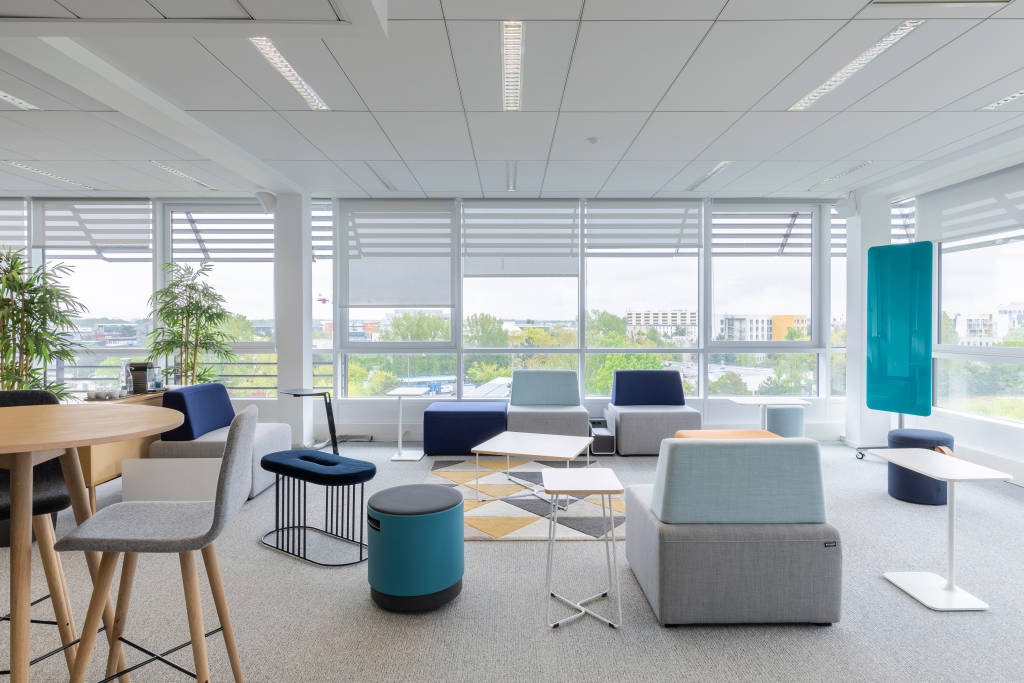
© Alexis Paoli
Scaling a Flexible Approach
Siemens’ approach to flexible working and the changes to the physical environment allowed the company to adapt more easily when the pandemic hit. At the same time, the company also introduced its change management program “TransformAction” which includes a focus on wellbeing and working in your perfect place.
“Since then, we have been in a permanent evolution process. We are convinced that for Siemens Smart Infrastructure, which offers solutions to make buildings smarter, this must be true for both our employees and our customers”, says Birkhofer.
Siemens Smart Infrastructure France has just redesigned its global headquarters in Switzerland according to the same concept. And Birkhofer says she would like to make sure this new way of working is implemented in at least one “flagship” workspace in each of Siemens’ seven French regions.
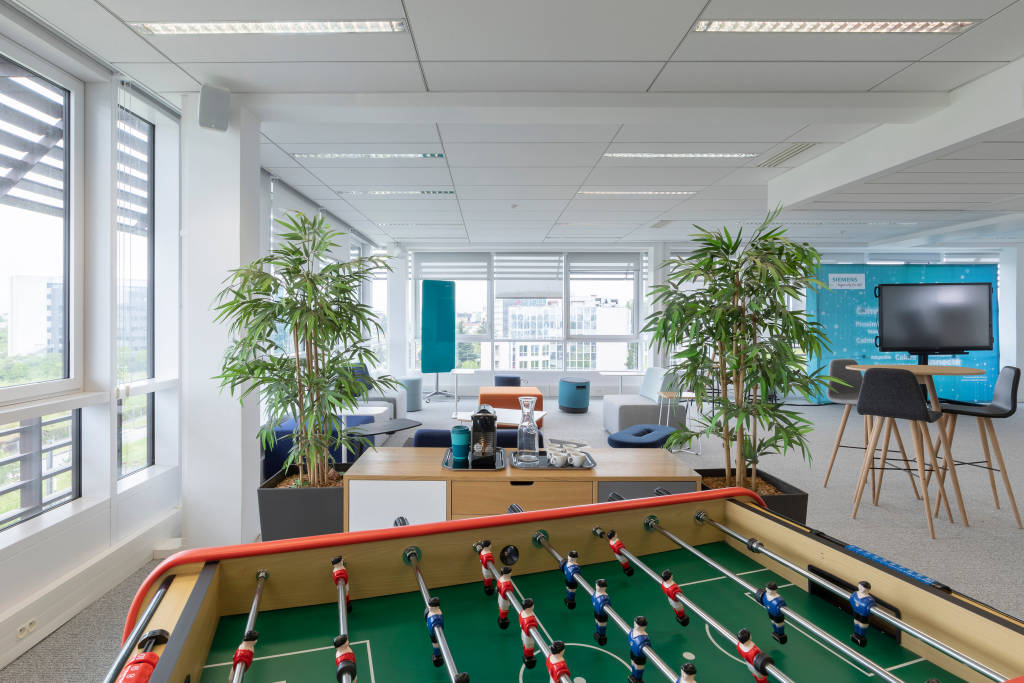
© Alexis Paoli
Next…The Home Office
Siemens leaders say all of the new products and spaces have made them look at the work environment more holistically. “We even started thinking of ways – both inside and outside – to encourage employees to walk more! Since remote work is here to stay, I’m also rethinking my workspace at home”, says Sebastien Butat.

